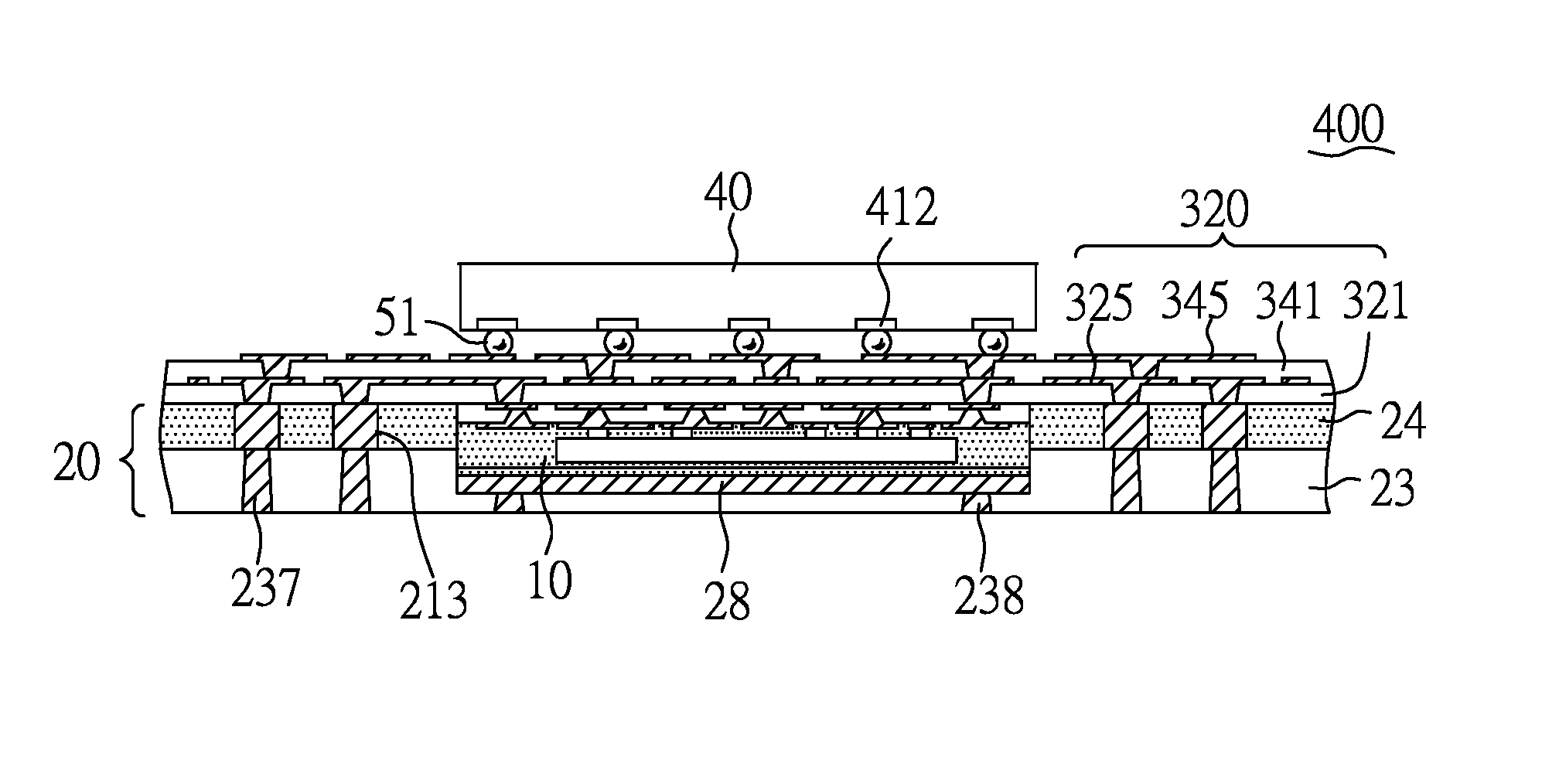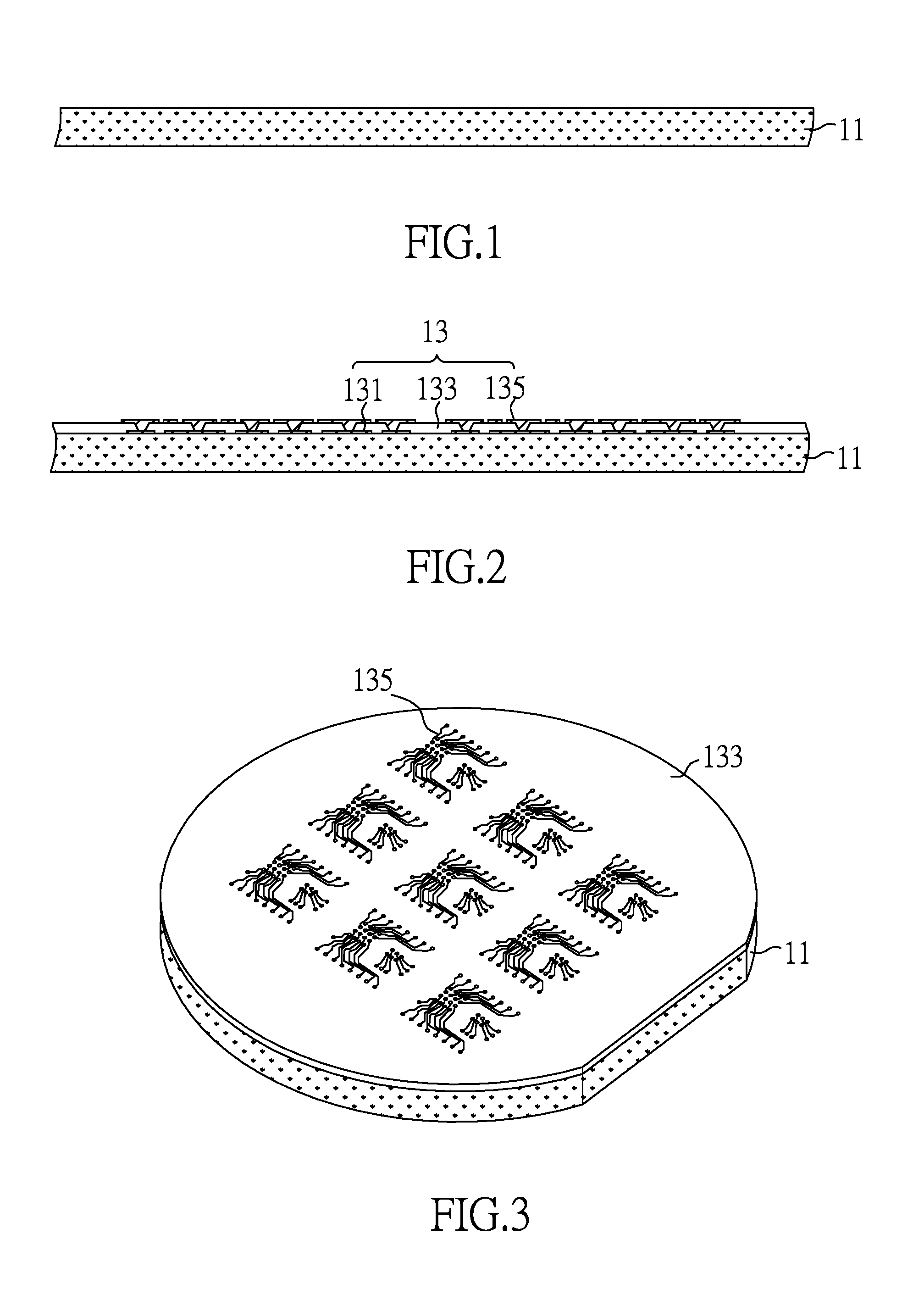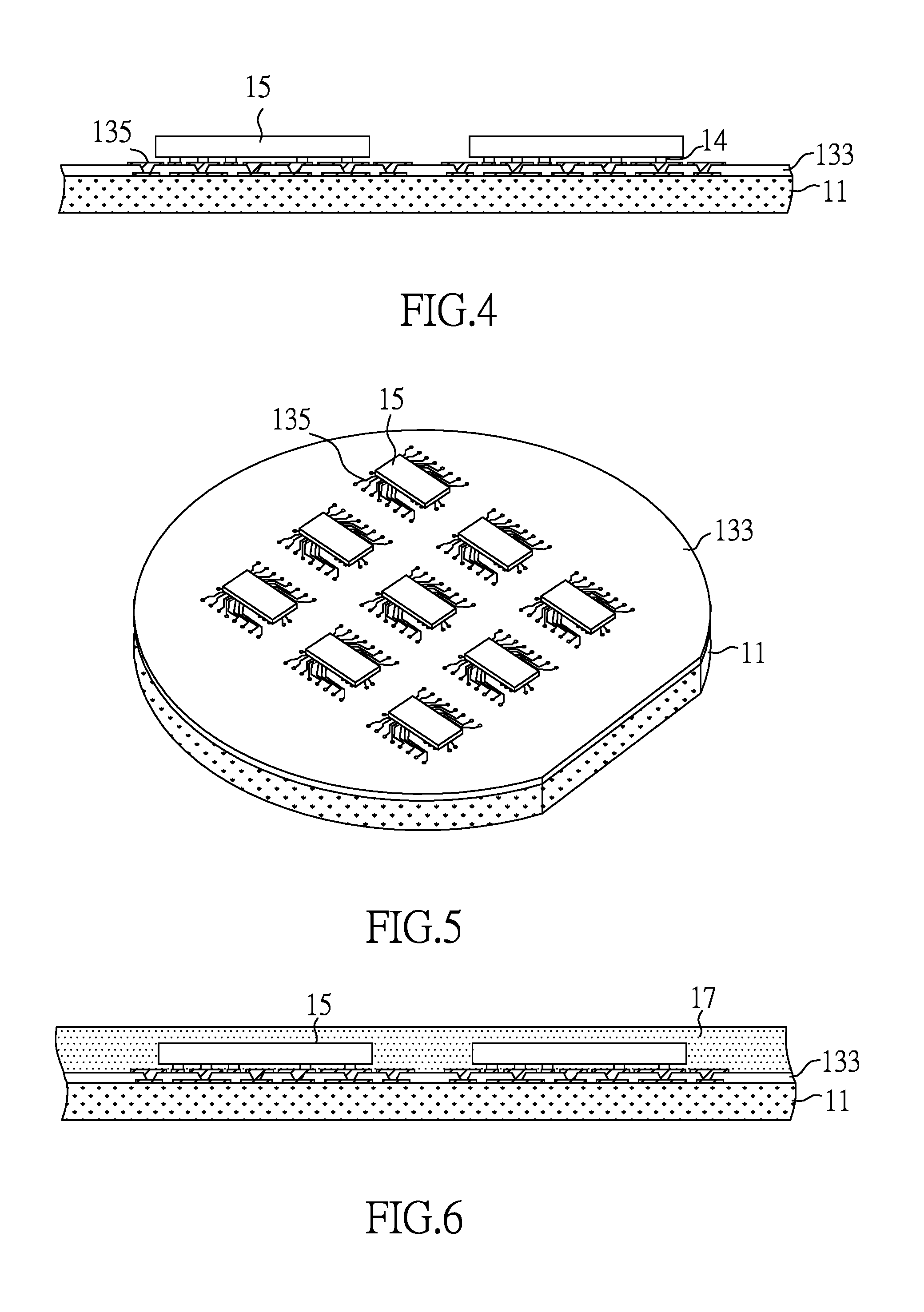Face-to-face semiconductor assembly having semiconductor device in dielectric recess
a semiconductor and dielectric recess technology, applied in semiconductor devices, semiconductor/solid-state device details, electrical apparatus, etc., can solve the problems of complex manufacturing process, inability to use in practical applications, and inability to reliably assemble, so as to reduce the interconnection distance
- Summary
- Abstract
- Description
- Claims
- Application Information
AI Technical Summary
Benefits of technology
Problems solved by technology
Method used
Image
Examples
embodiment 1
[0050]FIGS. 1-28 are schematic views showing a method of making a face-to-face semiconductor assembly that includes a first semiconductor device, a core base, a top buildup circuitry, a bottom buildup circuitry and a second semiconductor device in accordance with the first embodiment of the present invention.
[0051]FIG. 1 is a cross-sectional view of a sacrificial carrier 11. The sacrificial carrier 11 can be made of any peelable or removable material, such as silicon, copper, aluminum, iron, nickel, tin or alloys thereof.
[0052]FIGS. 2 and 3 are cross-sectional and top perspective views, respectively, of the structure with a re-distribution layer 13 formed on the sacrificial carrier 11. In this illustration, the re-distribution layer 13 includes first routing traces 131, an insulating layer 133 and second routing traces 135. The first routing traces 131 extend laterally on the sacrificial carrier 11. The insulating layer 133 contacts and covers and extends laterally on the sacrificia...
embodiment 2
[0074]FIGS. 29-41 are schematic views showing a method of making a thermally enhanced face-to-face semiconductor assembly with a metal paddle deposited in the recess and auxiliary metal pads underneath the metal posts in accordance with the second embodiment of the present invention.
[0075]For purposes of brevity, any description in Embodiment 1 above is incorporated herein insofar as the same is applicable, and the same description need not be repeated.
[0076]FIG. 29 is a cross-sectional view of the structure with a protruded metal platform 221 and an array of auxiliary metal pads 223 formed on a metal carrier 21. The protruded metal platform 221 and the auxiliary metal pads 223 extend from the bottom surface of the metal carrier 21 in the downward direction. In this illustration, the auxiliary metal pads 223 are substantially coplanar with the protruded metal platform 221 at their top and bottom surfaces. The auxiliary metal pads 223 can be made of the same material as the protruded...
embodiment 3
[0091]FIG. 42 is a cross-sectional view of another face-to-face semiconductor assembly 300 without bottom buildup circuitry in accordance with the third embodiment of the present invention.
[0092]In this embodiment, the face-to-face semiconductor assembly 300 is similar to that illustrated in Embodiment 1, except that no bottom buildup circuitry is formed on the bottom surface of the core base 20 and the core base 20 further includes an array of auxiliary metal pads 223 laterally covered by the first dielectric layer 23 and electrically coupled to and disposed between the metal posts 213 and the first metallized vias 237.
PUM
 Login to View More
Login to View More Abstract
Description
Claims
Application Information
 Login to View More
Login to View More - R&D
- Intellectual Property
- Life Sciences
- Materials
- Tech Scout
- Unparalleled Data Quality
- Higher Quality Content
- 60% Fewer Hallucinations
Browse by: Latest US Patents, China's latest patents, Technical Efficacy Thesaurus, Application Domain, Technology Topic, Popular Technical Reports.
© 2025 PatSnap. All rights reserved.Legal|Privacy policy|Modern Slavery Act Transparency Statement|Sitemap|About US| Contact US: help@patsnap.com



